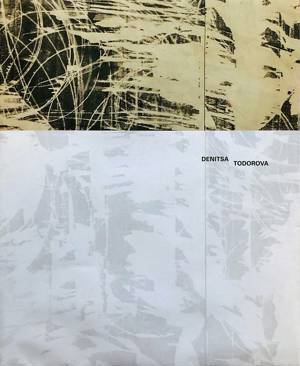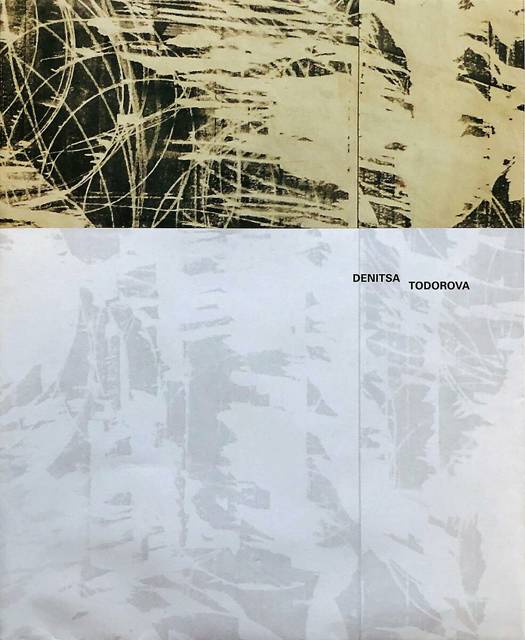
Je cadeautjes zeker op tijd in huis hebben voor de feestdagen? Kom langs in onze winkels en vind het perfecte geschenk!
- Afhalen na 1 uur in een winkel met voorraad
- Gratis thuislevering in België vanaf € 30
- Ruim aanbod met 7 miljoen producten
Je cadeautjes zeker op tijd in huis hebben voor de feestdagen? Kom langs in onze winkels en vind het perfecte geschenk!
- Afhalen na 1 uur in een winkel met voorraad
- Gratis thuislevering in België vanaf € 30
- Ruim aanbod met 7 miljoen producten
Zoeken
Phosphenes
seeing stars
Denitsa Todorova, Philippe Van Cauteren, Pieter Vermeulen, Eric Min, Peter Verhelst
Paperback | Engels
€ 45,00
+ 90 punten
Omschrijving
Seeing without eyes. On the work of Denitsa Todorova.
Denitsa Todorova takes her inspiration from everyday phenomena. Textures, shapes and patterns such as water surfaces, reflections, marble structures and firework explosions attract her attention as an artist. Frivolous effects, so to speak, rather than static scenes. Accidental, seemingly futile details that nevertheless make up the fabric of reality: the noise of materiality. It is often these little things that grant the world its unmistakable character: the crackling of a vinyl record, the throatiness of a voice, the grain of a photograph. 3 Todorova, in turn, aims to give visual shape to this, and does so with an almost obsessive dedication. As if she wants, in a way, to return sensory impressions — the intensity of imprints —, to reproduce them anew, express them once more, make them visible again. Her work can therefore hardly be called abstract: rather, it is especially concrete, hyper-sensory.
That radical dedication also finds expression in her quasi-ritual workprocess. Todorova prepares the delicate paper medium with dimly shimmering graphite powder, a time- and labour-intensive process that produces various shades of visual density. She then goes to work with them in a negative fashion, by again erasing or blotting out the surface, tearing it up, damaging it or — only rarely — destroying it. In her homeland, Todorova enjoyed an academic training in painting, where she came into contact with the sgraffito technique, in which a line drawing is scratched into fresh mortar. That technical touch is still recognisable in her current work. The images that are created through this well-considered décollage are undeniably graphic in nature, but thematically rather seem to be linked to the everyday. The everyday as in infra-ordinary 4, like a coffee cup can leave a circle, like objects cast their shadows, like everyday life leaves its untold traces, — how each time the same thing differs again and again. Is it not these traces that permeate Denitsa Todorova’s practice?
Pieter Vermeulen, March 2021
Denitsa Todorova takes her inspiration from everyday phenomena. Textures, shapes and patterns such as water surfaces, reflections, marble structures and firework explosions attract her attention as an artist. Frivolous effects, so to speak, rather than static scenes. Accidental, seemingly futile details that nevertheless make up the fabric of reality: the noise of materiality. It is often these little things that grant the world its unmistakable character: the crackling of a vinyl record, the throatiness of a voice, the grain of a photograph. 3 Todorova, in turn, aims to give visual shape to this, and does so with an almost obsessive dedication. As if she wants, in a way, to return sensory impressions — the intensity of imprints —, to reproduce them anew, express them once more, make them visible again. Her work can therefore hardly be called abstract: rather, it is especially concrete, hyper-sensory.
That radical dedication also finds expression in her quasi-ritual workprocess. Todorova prepares the delicate paper medium with dimly shimmering graphite powder, a time- and labour-intensive process that produces various shades of visual density. She then goes to work with them in a negative fashion, by again erasing or blotting out the surface, tearing it up, damaging it or — only rarely — destroying it. In her homeland, Todorova enjoyed an academic training in painting, where she came into contact with the sgraffito technique, in which a line drawing is scratched into fresh mortar. That technical touch is still recognisable in her current work. The images that are created through this well-considered décollage are undeniably graphic in nature, but thematically rather seem to be linked to the everyday. The everyday as in infra-ordinary 4, like a coffee cup can leave a circle, like objects cast their shadows, like everyday life leaves its untold traces, — how each time the same thing differs again and again. Is it not these traces that permeate Denitsa Todorova’s practice?
Pieter Vermeulen, March 2021
Specificaties
Betrokkenen
- Auteur(s):
- Uitgeverij:
Inhoud
- Aantal bladzijden:
- 164
- Taal:
- Engels
- Geïllustreerd:
- Ja
Eigenschappen
- Productcode (EAN):
- 9789077207918
- Verschijningsdatum:
- 14/05/2021
- Uitvoering:
- Paperback
- Afmetingen:
- 240 mm x 300 mm
- Gewicht:
- 820 g

Alleen bij Standaard Boekhandel
+ 90 punten op je klantenkaart van Standaard Boekhandel
Beoordelingen
We publiceren alleen reviews die voldoen aan de voorwaarden voor reviews. Bekijk onze voorwaarden voor reviews.









